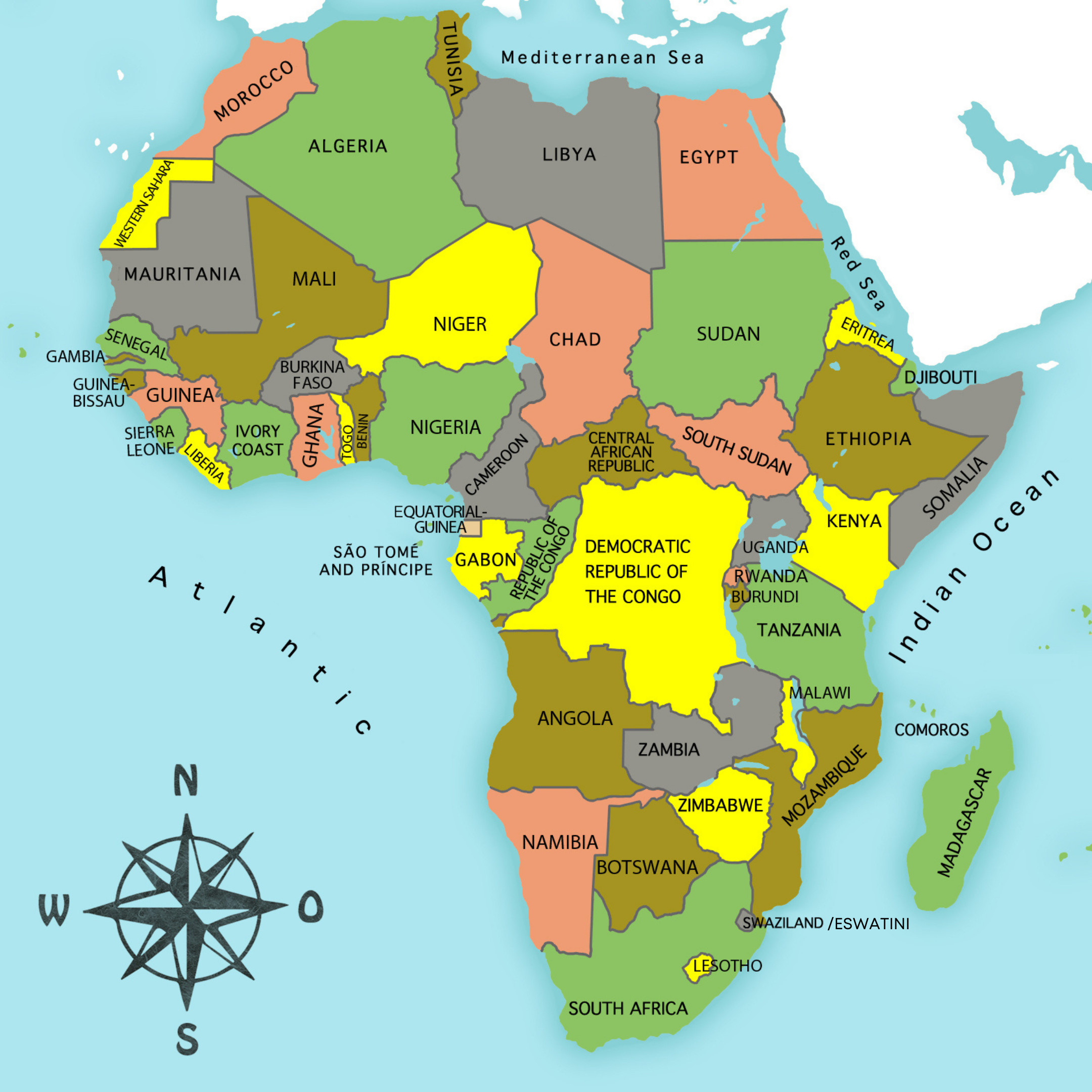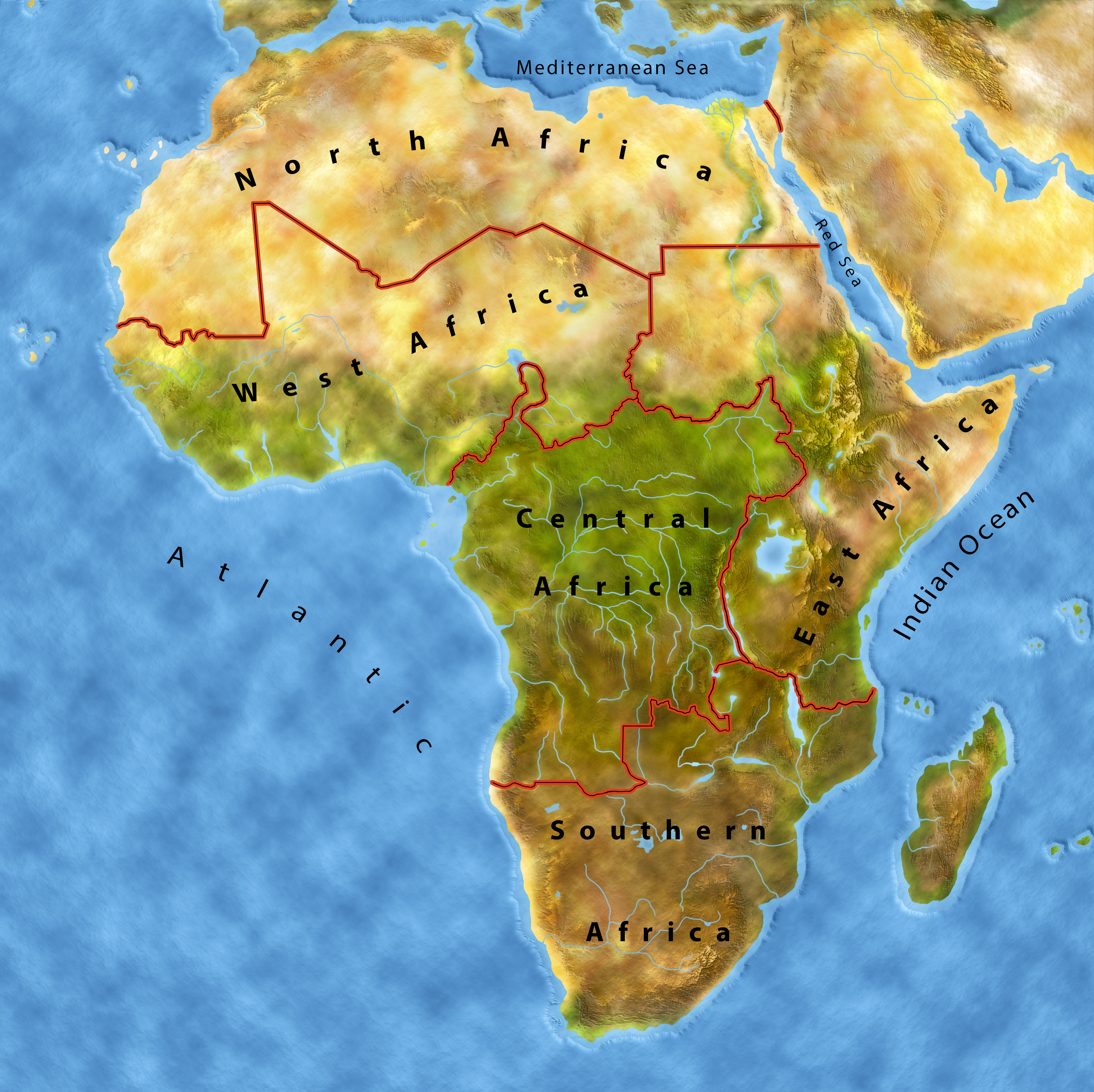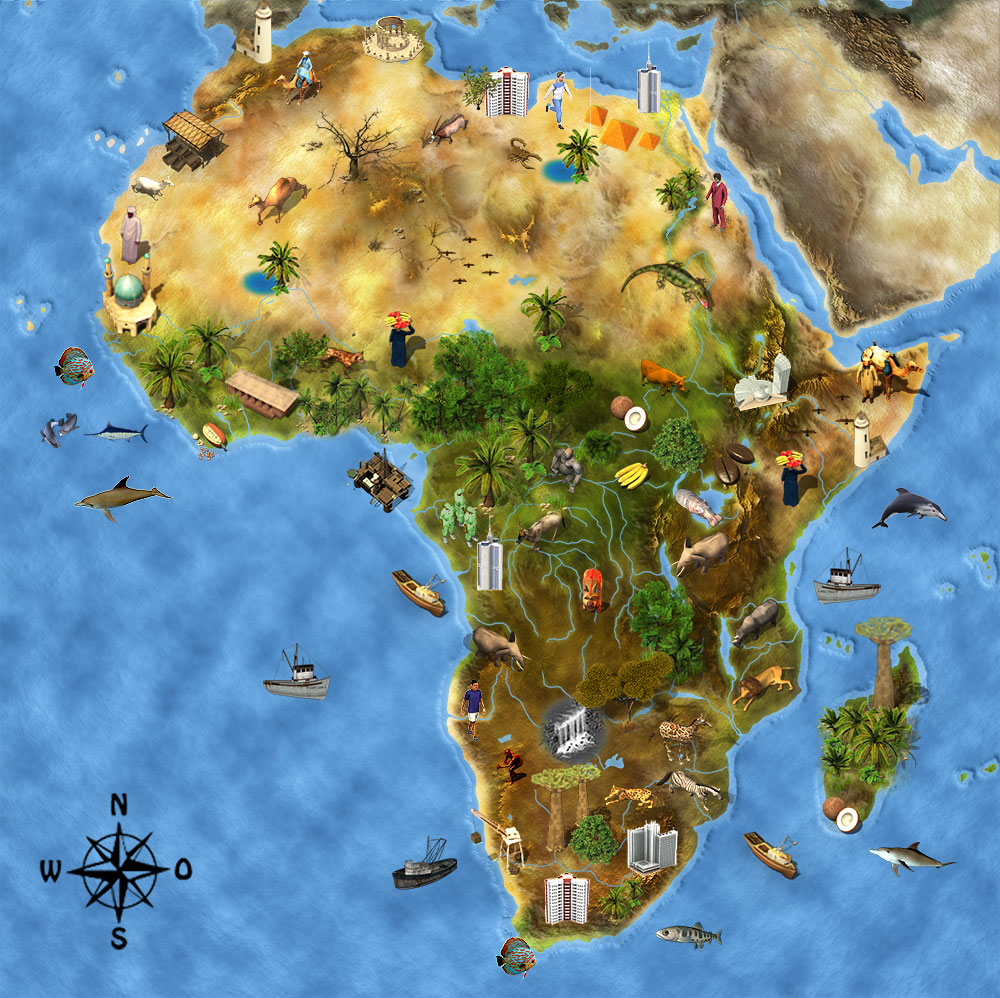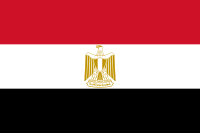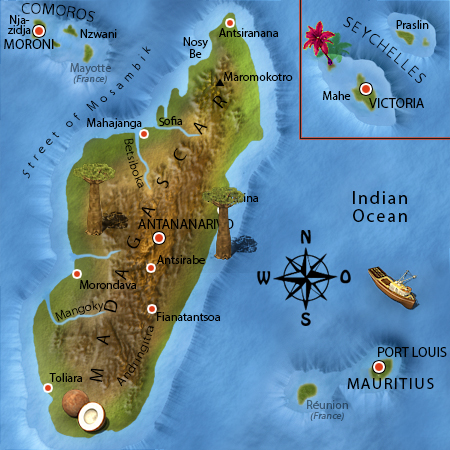Marhaban, welcome to the Comoro Islands, the "Spice Islands" in the Indian Ocean
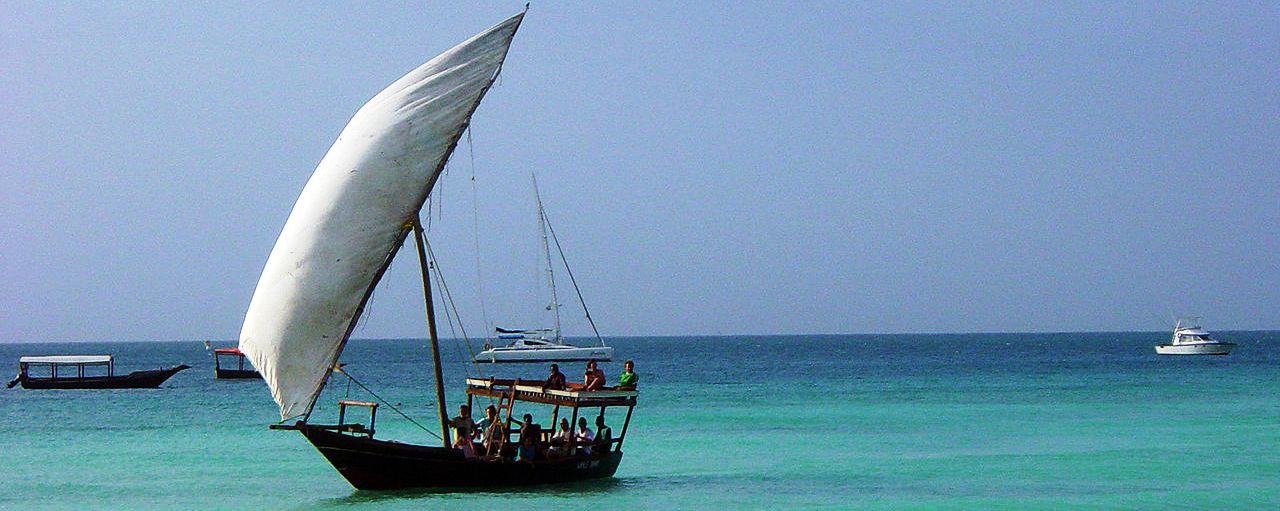
The Comoros are situated off the south-east coast of Africa, across from Mozambique. The island state consists of the three islands Grande Comore, Anjouan and Mohéli. The fourth island Mayotte is an exception. The French count this island as one of their overseas territories. Once they ruled over the Comoros as a colonial power. But the Comorians regard Mayotte as part of their republic today. That is why they have already included this fourth island in their flag by adding a star. The name of the Comoro islands originates from Arabic and means "moon islands". Connect the islands on a map with a line, and you will have the shape of a moon.
Landscapes
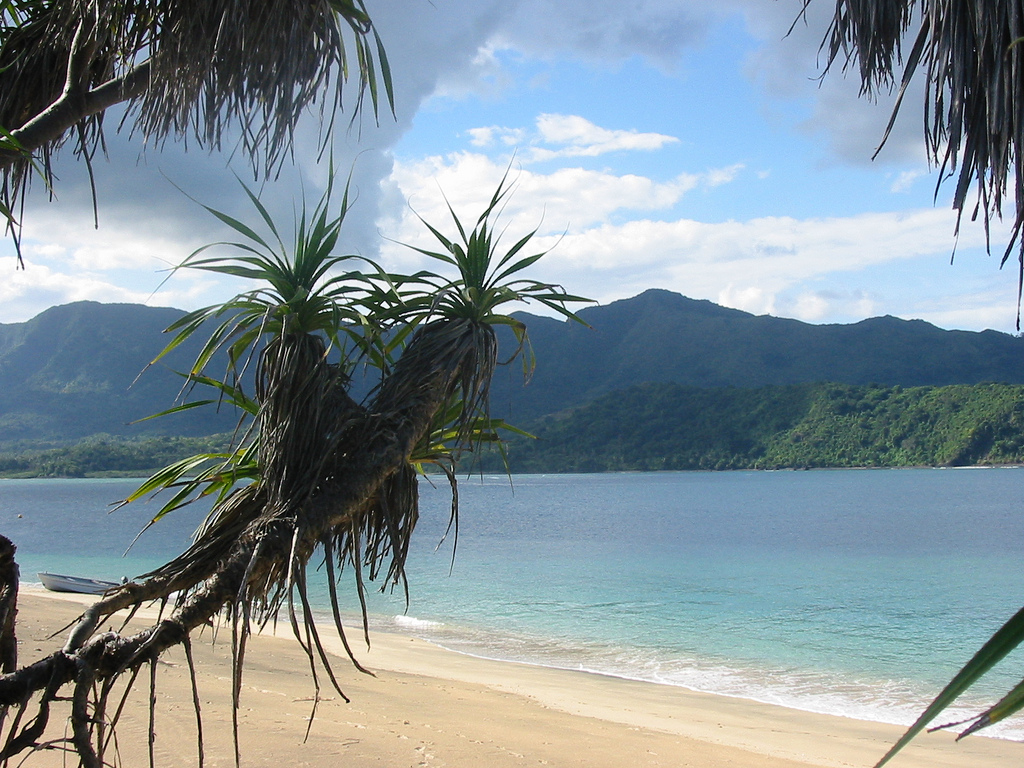 The Comoros arose from volcanoes and thus is very mountainous. Beautiful plateaus and chains of hills characterize the landscape. Within the country wide savannahs and tropical rainforest extend. Sadly, most forest regions were destroyed by the slash-and-burn method. Biodiverse reefs have formed on the ragged coasts. Here, the rare giant turtles can be found. Thick mangrove forests line the coasts. The trees protect the coasts from flooding. Their giant aerial roots provide living space for numerous fish. The highest mountain of the Comoro islands is the volcano Mount Karthala with a height of 2361 metres, which is located on Grand Comore. One can hike to the top and cast a glance at the inside of the volcano. The Comoros lie close to the equator. That is why all year long, there is a tropical climate with 25 degrees. It is dry season from May until October; in November the rainy season starts.
The Comoros arose from volcanoes and thus is very mountainous. Beautiful plateaus and chains of hills characterize the landscape. Within the country wide savannahs and tropical rainforest extend. Sadly, most forest regions were destroyed by the slash-and-burn method. Biodiverse reefs have formed on the ragged coasts. Here, the rare giant turtles can be found. Thick mangrove forests line the coasts. The trees protect the coasts from flooding. Their giant aerial roots provide living space for numerous fish. The highest mountain of the Comoro islands is the volcano Mount Karthala with a height of 2361 metres, which is located on Grand Comore. One can hike to the top and cast a glance at the inside of the volcano. The Comoros lie close to the equator. That is why all year long, there is a tropical climate with 25 degrees. It is dry season from May until October; in November the rainy season starts.
Animal World
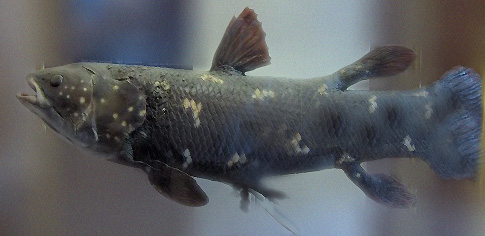 On the Comoro islands live animals of the savannas and rain forests, such as many monkey species. The mongoose lemur also lives here, a small prosimian, whose search for food is mainly at night. That is why it has been named “goblin of the night” by the natives. A few decades ago, divers made a sensational discovery in the deep underwater trenches. They found the last coelacanths, which is a very old fish species that only lives in deep waters. They are considered to be living fossils. Until their discovery it was believed that these primeval fish had become extinct during the cretaceous age about 400 millions years ago. But off the coast of east Africa they have survived.
On the Comoro islands live animals of the savannas and rain forests, such as many monkey species. The mongoose lemur also lives here, a small prosimian, whose search for food is mainly at night. That is why it has been named “goblin of the night” by the natives. A few decades ago, divers made a sensational discovery in the deep underwater trenches. They found the last coelacanths, which is a very old fish species that only lives in deep waters. They are considered to be living fossils. Until their discovery it was believed that these primeval fish had become extinct during the cretaceous age about 400 millions years ago. But off the coast of east Africa they have survived.
Moroni – the Capital
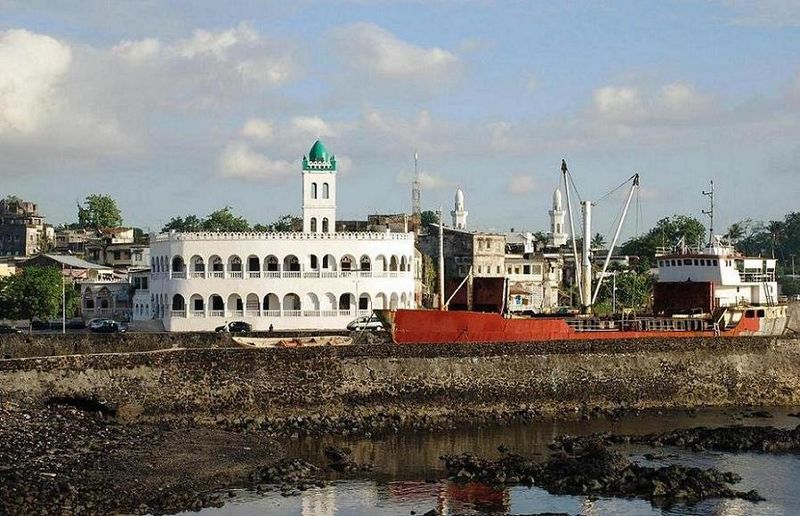 The capital of the Comoros is Moroni on Grande Comore. Arabic traders founded the city in the 10th century. About 50.000 people live in the small harbour town. The town is gladly visited due to its colourful market, the picturesque alleys and splendid mosques. At the market, exotic fruits and spices, jewellery and artfully carved wooden figures can be found.
The capital of the Comoros is Moroni on Grande Comore. Arabic traders founded the city in the 10th century. About 50.000 people live in the small harbour town. The town is gladly visited due to its colourful market, the picturesque alleys and splendid mosques. At the market, exotic fruits and spices, jewellery and artfully carved wooden figures can be found.
Peoples and Languages
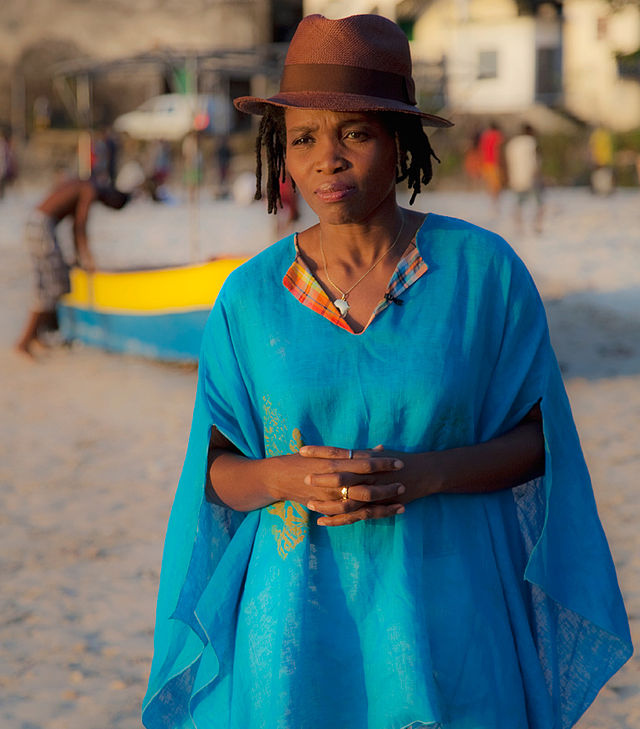
The ancestors of the Comorians originate from almost all continents. Arabs, Bantu people, Indians, Madagascans and immigrants from the Indonesian regions have intermingled into a colourful island people. The French language and cuisine have survived after the end of the colonial era. The official languages are French, Arabic and Comorian. Comorian is very similar to Swahili, which is spoken in many east African countries. The majority of the inhabitants live in fishing villages along the coasts. The Comoro islands among themselves are elusive, which is why the Comorians live pretty isolated from the outside world.
Schools and Education
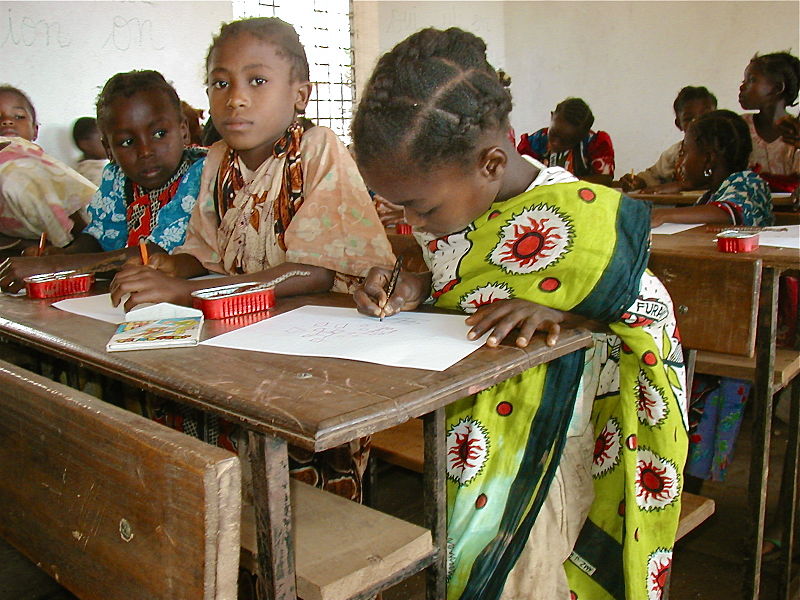
Games Children play
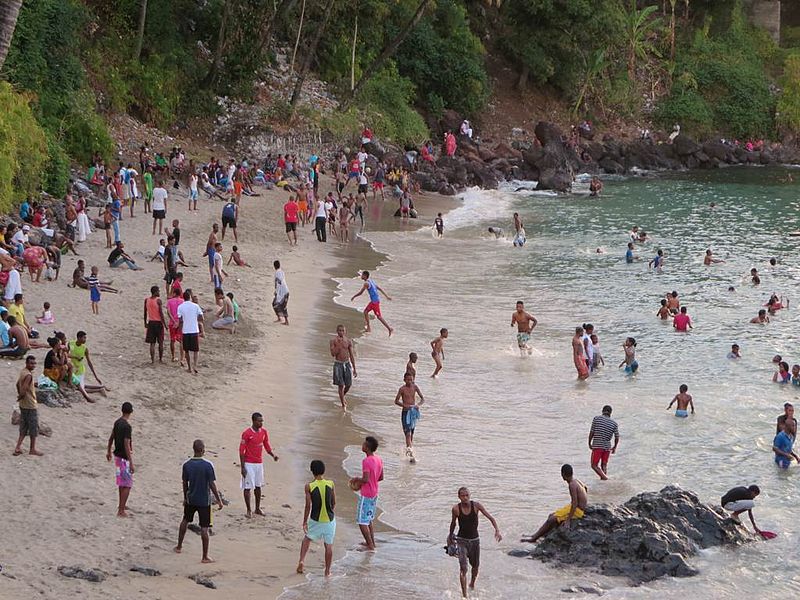 Football is one of the most popular games for boys. The girls watch them play and sometimes play as well. Ever since the Comorians have their own football team, everyone meets on the streets in front of televisions to watch the Africa Cup of Nations or international matches and cheers for the team. On Sundays, families meet on the beach and the children go diving or hold swimming competitions.
Football is one of the most popular games for boys. The girls watch them play and sometimes play as well. Ever since the Comorians have their own football team, everyone meets on the streets in front of televisions to watch the Africa Cup of Nations or international matches and cheers for the team. On Sundays, families meet on the beach and the children go diving or hold swimming competitions.
Economy and natural Resources
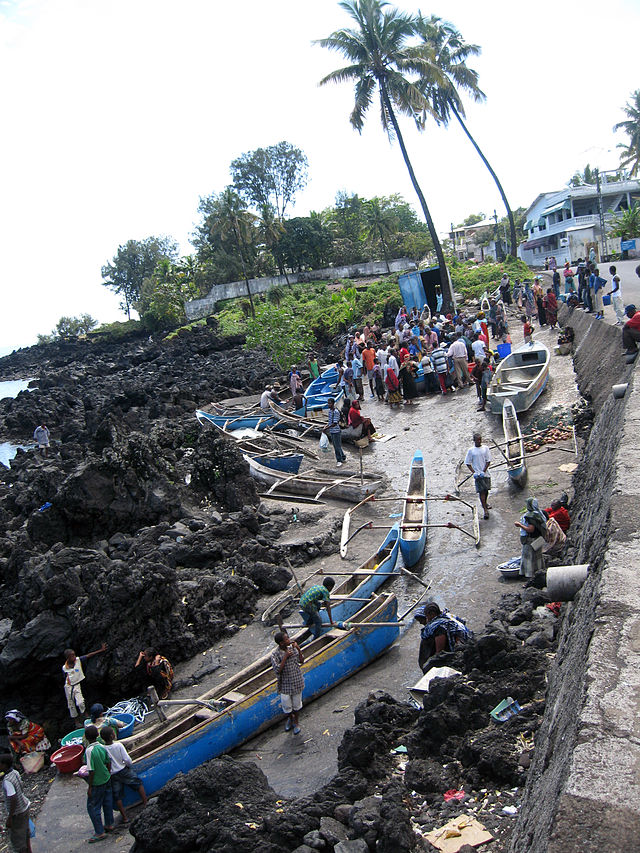 Most inhabitants live off fishing and the cultivation of spices, just like their ancestors did hundreds of years ago. Insiders call the Comoros the "perfume or spice islands". Vanilla and cloves are grown on plantations. The ylang-ylang oil, which is added to perfumes, originates here. Ylang-ylang means flower of flowers in Malaysian. The yellow blossoms of the ylang-ylang tree bloom all year long. But only when the trees are cultivated by the humans, they emit the unique aromatic scent. The most famous perfume in the world, Chanel no. 5, is based on the scent of these flowers. Since there is barely any industry, the economic development only slowly progresses.
Most inhabitants live off fishing and the cultivation of spices, just like their ancestors did hundreds of years ago. Insiders call the Comoros the "perfume or spice islands". Vanilla and cloves are grown on plantations. The ylang-ylang oil, which is added to perfumes, originates here. Ylang-ylang means flower of flowers in Malaysian. The yellow blossoms of the ylang-ylang tree bloom all year long. But only when the trees are cultivated by the humans, they emit the unique aromatic scent. The most famous perfume in the world, Chanel no. 5, is based on the scent of these flowers. Since there is barely any industry, the economic development only slowly progresses.
Attractions
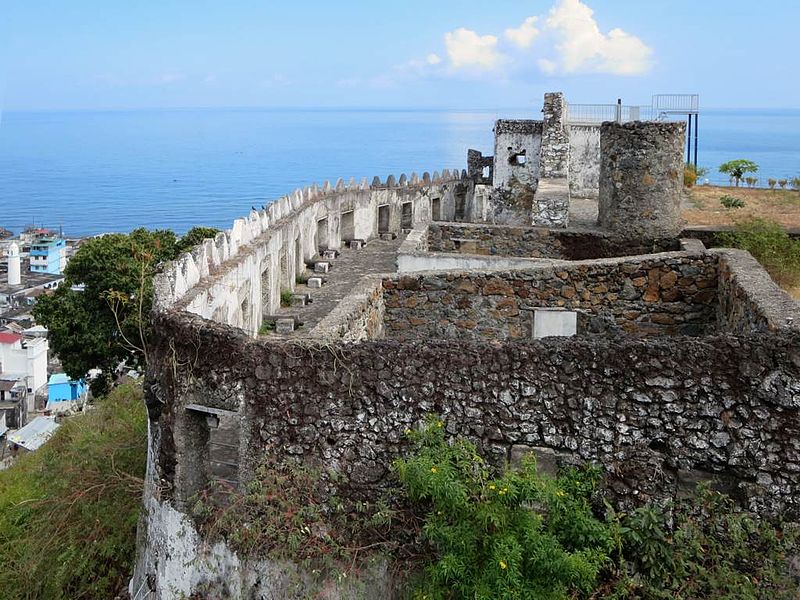 Numerous old royal tombs and fortresses can be discovered on the islands. Some of them still have old canons, and some have been made into museums. On the left side in the image you can see the citadel of Mutsamadu. Most visitors come to the Comoros to dive and to discover the fantastic underwater world. Maybe they will meet the primeval coelacanth.
Numerous old royal tombs and fortresses can be discovered on the islands. Some of them still have old canons, and some have been made into museums. On the left side in the image you can see the citadel of Mutsamadu. Most visitors come to the Comoros to dive and to discover the fantastic underwater world. Maybe they will meet the primeval coelacanth.
History
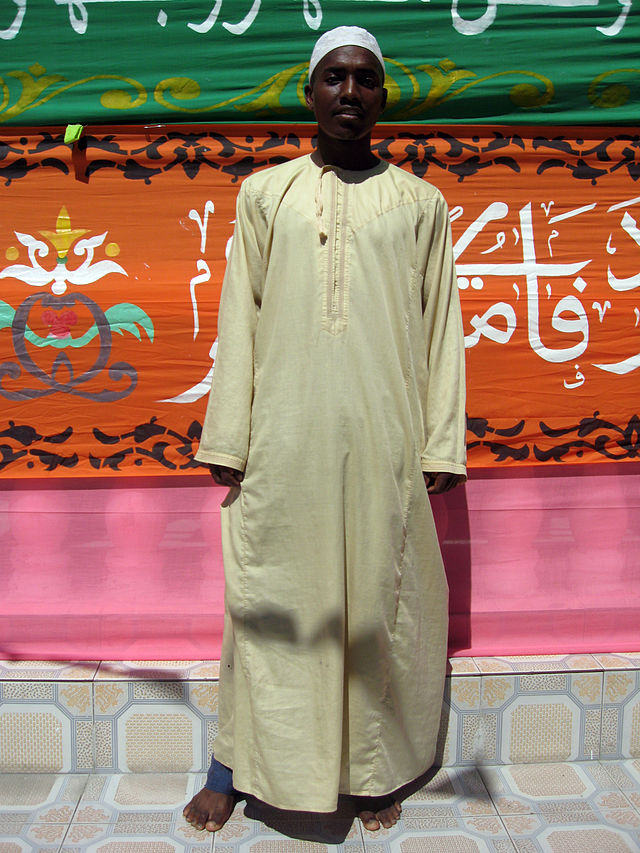 About 500 AD the first settlers arrived to the islands. They presumably were navigators from Indonesia. The uninhabited islands must have appeared as a paradise to them. The beaches were desolate. In the interior of the islands tropical forests grew, which were populated by exotic animals. The first settlements were built in the protected bays of the islands. Later, Bantu peoples arrived from the mainland. They intermingled with the natives. In the 10th century, the island radically started to change. Persian traders immigrated and brought the Islam with them to the islands. Mosques were built and little towns with colourful markets were founded. Trading with the mainland became more intensive and some people made a fortune, which led to small sultanates arising. The next big change occurred in 1503, when Portuguese navigators discovered the Comoro Islands and noted them on their maps. Adventurers and pirates followed the explorers. Slave traders from Madagascar spread terror and depopulated the island. In the middle of the 19th century, Madagascan kings and sultans ruled over the Comorians. Eventually, the French took over the reins and made the islands a French colony. The island population grew more and more furious with the foreign rulers, who exploited their country and made them into peons. They fought for their freedom and chased the Europeans away.
About 500 AD the first settlers arrived to the islands. They presumably were navigators from Indonesia. The uninhabited islands must have appeared as a paradise to them. The beaches were desolate. In the interior of the islands tropical forests grew, which were populated by exotic animals. The first settlements were built in the protected bays of the islands. Later, Bantu peoples arrived from the mainland. They intermingled with the natives. In the 10th century, the island radically started to change. Persian traders immigrated and brought the Islam with them to the islands. Mosques were built and little towns with colourful markets were founded. Trading with the mainland became more intensive and some people made a fortune, which led to small sultanates arising. The next big change occurred in 1503, when Portuguese navigators discovered the Comoro Islands and noted them on their maps. Adventurers and pirates followed the explorers. Slave traders from Madagascar spread terror and depopulated the island. In the middle of the 19th century, Madagascan kings and sultans ruled over the Comorians. Eventually, the French took over the reins and made the islands a French colony. The island population grew more and more furious with the foreign rulers, who exploited their country and made them into peons. They fought for their freedom and chased the Europeans away.
The Comoro Islands Today
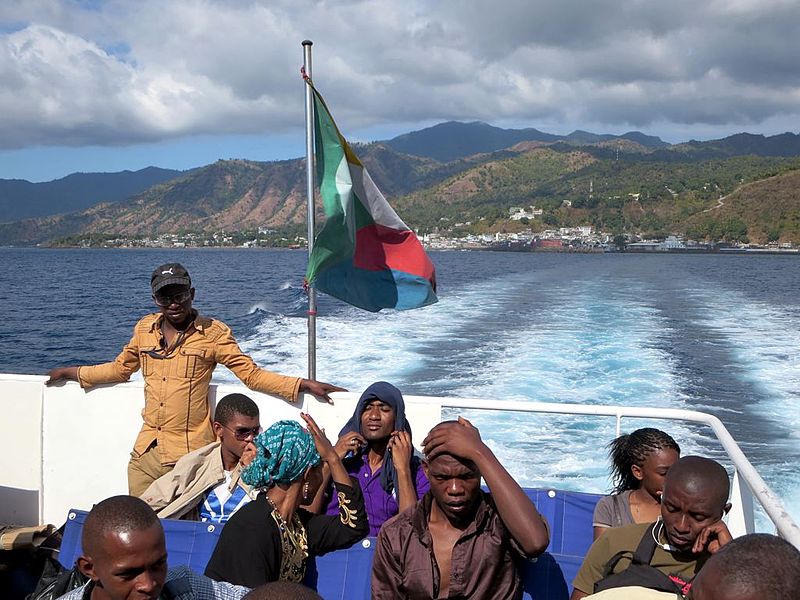 The Comoros have been an independent republic since 1975. The Comorians call their islands an Islamic federal republic. They are proud of their cultural variety. In many areas, such as the language and the cuisine, Arabic and French influences predominate. The Comoros are regarded as one of the most beautiful places in the world, with wild sand beaches, active volcanoes and tropical forests. Despite their scenic beauties of nature is this young state one of the poorest in the world. Young Comorians more and more see these natural treasures as sources of income. They cautiously expand tourism and build small hotel complexes as well as diving and surfing schools.
The Comoros have been an independent republic since 1975. The Comorians call their islands an Islamic federal republic. They are proud of their cultural variety. In many areas, such as the language and the cuisine, Arabic and French influences predominate. The Comoros are regarded as one of the most beautiful places in the world, with wild sand beaches, active volcanoes and tropical forests. Despite their scenic beauties of nature is this young state one of the poorest in the world. Young Comorians more and more see these natural treasures as sources of income. They cautiously expand tourism and build small hotel complexes as well as diving and surfing schools.


